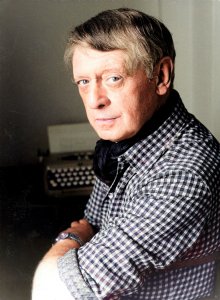Overview
Anthony Burgess’s 1962 novel follows Alex, a 15-year-old delinquent in a near-future Britain where youth violence and state control escalate in tandem. Narrated entirely in Alex’s swaggering first-person voice, the book blends black comedy and moral inquiry as it tracks his rise as a gang leader, his capture and state “cure,” and his contested path toward adulthood. The title’s image of an “orange” made like a machine points to the central question: whether removing the capacity to choose evil also destroys the possibility of genuine goodness.
Setting and Voice
Alex lives in a drab, bureaucratic society riddled with street crime, stalled families, and opportunistic politics. He leads a small gang, Dim, Georgie, and Pete, through nights of theft, beatings, and sexual assault. The narration uses Nadsat, a teen argot blending Slavic roots, cockney, schoolboy slang, and neologisms. This language both cushions and exposes brutality, forcing the reader to acclimate to Alex’s worldview while noticing how rhetoric can prettify or estrange violence.
Plot
After a spree that includes invading a writer’s home and attacking his wife, Alex clashes with his own followers. During a later burglary at an elderly woman’s house, his gang betrays him and flees; the woman’s death turns his arrest into a murder case. Sentenced to a long term, he keeps his head down in prison, cultivates a taste for scripture’s rhetorical thunder, and volunteers for an experimental treatment promising early release: the Ludovico Technique.
The conditioning subjects Alex to films of violence while administering drugs that induce overwhelming nausea. Aggression becomes physically impossible; because classical music accompanies the films, his beloved Beethoven also triggers sickness. Certified “reformed,” he is released into a world that wants him harmless but offers no genuine place for him. His parents have taken in a lodger who has replaced him. Old enemies, now policemen, beat him and dump him in the countryside. He staggers to the home of the writer he once attacked; the man, now aligned with political dissidents, recognizes Alex’s suffering as evidence of government tyranny and seeks to use him. When Beethoven is played to exploit his conditioning, Alex attempts suicide to escape the torment. He survives, and the government quietly reverses his treatment to avoid scandal.
Back on the streets and free to choose again, Alex briefly assembles a new gang, but the thrill fades. Meeting Pete, who has settled into marriage and steady work, Alex imagines a future in which he might choose stability and family over predation.
Themes
The novel interrogates free will, arguing that coerced virtue is not virtue at all. State violence mirrors street violence, posing the danger that a society obsessed with order can mechanize the soul. Religion and aesthetics complicate morality: Alex’s love of music is sincere yet bound to cruelty, while a prison chaplain insists that goodness must be chosen. Political actors exploit Alex as a symbol, reducing him alternately to monster or martyr.
Style and Editions
Burgess’s Nadsat immerses readers in Alex’s mind, softening shock while revealing how euphemism and rhythm can seduce. The original UK edition ends with Alex’s weary, tentative desire to grow up and choose good. Early American editions omitted this final chapter, leaving a bleaker loop of violence; the difference sharply colors the novel’s argument about moral development and the possibility of change.
A Clockwork Orange
Dystopian novel narrated in a fictional teen argot; follows Alex, a charismatic gang leader subjected to an experimental behaviour-modification treatment intended to curb violent behaviour, raising questions about free will, state control and morality.
Author: Anthony Burgess
 Anthony Burgess, renowned British novelist and author of A Clockwork Orange, celebrated for his literary prowess.
Anthony Burgess, renowned British novelist and author of A Clockwork Orange, celebrated for his literary prowess.
More about Anthony Burgess
 Anthony Burgess, renowned British novelist and author of A Clockwork Orange, celebrated for his literary prowess.
Anthony Burgess, renowned British novelist and author of A Clockwork Orange, celebrated for his literary prowess.